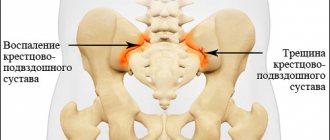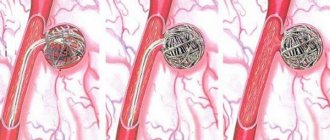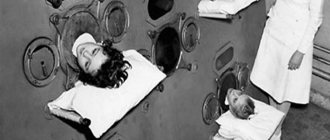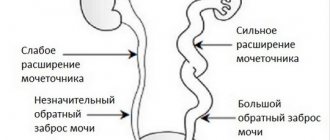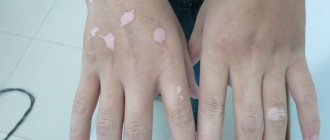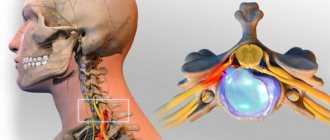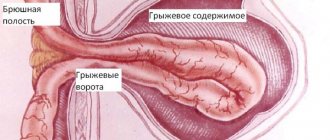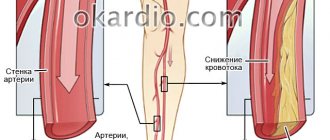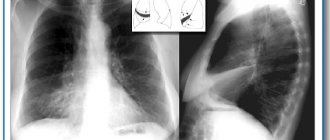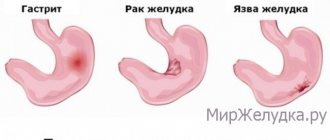Schmorl's hernia or Schmorl's node on the spine is a complex of structural and degenerative changes in the spinal column, in which no pronounced symptoms are observed. In patients, this diagnosis is associated with a pathology for which treatment is impossible. This opinion is associated with an etiological factor - a congenital anomaly of the spinal column.
In most cases, the disease occurs from birth, and only in rare situations does it appear due to exposure to external factors. The pathological process is characterized by the pressing of one vertebra by another, located above or below it. Unlike a regular intervertebral hernia, Schmorl's nodes in the spine do not cause pinched nerves, and protrusion of the vertebra occurs towards the spinal canal.
Hernia factor
To understand what a Schmorl hernia is, we note that there are intervertebral discs in the spine. They play the role of a kind of spacers between the discs and protect bone tissue from early destruction. Inside the disc there is gelatinous tissue (a core surrounded by a membrane). It consists of cartilaginous rings with two end plates containing cartilage tissue. With their help, the disc pushes the spongy substance into hard tissues.
Such processes can occur during the growth of a child or young person. Usually at this age a Schmorl hernia of the spine is diagnosed. As a child grows, bones grow slowly, but the growth rate of soft tissues is much faster. As a result, pressure on the vertebral tissue increases. The described phenomena are the impetus for the formation of a hernia of this type.
Sometimes, during a period of active growth, the disc between the vertebrae can noticeably increase. Nodules form on the surface of the vertebral plate. They can push through tissue in the vertebral body. This is how small-sized Schmorl hernias grow. Other factors for the development of a hernia are:
- osteoporosis (in this case, a significant drop in bone tissue strength occurs, and the disc easily presses on the vertebral body);
- curvature of the spine is often complicated by a hernia;
- lifting heavy objects;
- frequent blows;
- sports jumping;
- intense physical labor;
- Scheuermann-Mau syndrome (this pathology is of unclear nature).
Types of Schmorl's hernias
Based on the location of the defects in the spine, hernias of the cervical, thoracic and lumbar regions are distinguished.
Depending on their location in the vertebral body, they can be:
- intracorporeal (located inside the body);
- central (on the border of the articular surfaces);
- anterior (in the front of the body);
- posterior (in the back);
- deep (cartilage pushes the spongy bone to a depth of more than 50% of the height of the vertebral body).
Intracorporeal Schmorl's hernias: 1 – upper; 2 – lower; 3 – lateral; 4 – front
Based on the number, cartilaginous nodes are divided into single and multiple.
According to the size, Schmorl's hernias are small and large. The latter are more unpleasant. They quickly lead to the development of various complications.
Main signs of the disease
Schmorl's hernia can often be multiple. This means that the pathological process affects not one disc, but many. The affected vertebrae are usually located in the lower back or thoracic region. This type of hernia never occurs in the cervical region—the vertebrae remain healthy during this pathological process. With Schmorl's hernia, the symptoms are as follows:
- Pain in the lumbar region, back, disturbing after prolonged exercise.
- Back muscle tension.
- Feeling of loss of sensation in the legs.
If Schmorl's nodes develop in the lumbar region, then often the symptoms can be very mild or completely absent. Back pain is mild to moderate. However, such phenomena are more often the exception to the rule. Typically, Schmorl's node is painful, and the pain is noticeably intensified after exercise or hard work.
The appearance of this hernia may be accompanied by a strong feeling of fatigue, especially if the person has had exercise. Pain in such cases appears when the affected area is very large. Why does it arise? This occurs in response to the reaction of the back muscles: they intensively protect the damaged area of the vertebra. This is how the muscles quickly fatigue, and they signal pain.
Often, patients diagnosed with Schmorl's intervertebral hernia lose mobility early. The load on the joints increases significantly, and arthrosis of the intervertebral joints develops. There is a high risk of fractures and even fractures of the vertebrae (after all, his body becomes weak).
Gymnastics and exercises ↑
Performing exercises allows you to create a strong muscle corset and strengthen it as much as possible, as well as achieve expansion of the interdisc space, thereby improving impaired mobility of the spine.
When treating Schmorl's hernia with therapeutic exercises, you should include abdominal exercises, development of the rectus dorsi muscles and strengthening of the gluteal muscles.
Movements that excessively twist the spine should be avoided, and “snatch” exercises should be completely eliminated.
Aerobics, jumping, and shaping are also completely excluded.
The main exercises that are recommended for this type of vertebral hernia are the following:
- In a sitting position, swing dumbbells to the sides.
- In the starting position, lying on your back, lift your torso; 2 sets of 10 repetitions are recommended.
- Performing pull-ups.
A more precise selection of exercises can be provided by a specialist in physical therapy.
He will also provide the necessary recommendations regarding the duration of their implementation.
It is imperative to agree with your doctor on the type and degree of permissible loads.
Swimming is very useful for this condition, during which the load is removed from the vertebrae and the back muscles are strengthened.
You should not swim during periods of using thermal procedures or compresses.
At home, you can also perform physiological traction of the spine, which occurs under the weight of your own body.
This is achieved by raising the head end of the bed by 10-15 cm.
Which ointment helps best with cervical osteochondrosis? Read our article. Why does nagging pain in the lower back occur? Find out here.
What exercises are most effective for osteochondrosis of the lumbosacral spine? The answer is here.
Diagnosis of the disease
Treatment of the pathology can be started only after a thorough diagnosis. The patient's history and complaints are collected. The doctor will be interested in whether there is pain, where it is located and how severe it is. The presence of injuries and stress on the spinal column is of great importance. The affected part of the spine is carefully examined and examined for the presence of swelling. In addition, the intervertebral disc itself is subject to examination.
Other examination methods for diagnosing the disease:
- Computed and magnetic resonance imaging. Such diagnostic methods are used to make sure that signs of the disease appear precisely because Schmorl nodes are present in the spine. After all, pain and numbness in the legs can also appear as a result of other diseases.
- Radiography is the main way to determine an accurate diagnosis. Indeed, if Schmorl's hernia is correctly identified, treatment will bring results.
Differential examination is also extremely important. Note that this hernia does not show signs of compression of the roots. It is necessary to differentiate this condition from the following pathologies:
- arthrosis;
- dysplasia;
- osteochondrosis;
- neurofibroma;
- lipoma;
- spinal cysts;
- femoral and inguinal hernia;
- pathologies of the gastrointestinal tract.
Prevention
Prevention must be carried out comprehensively and by performing the following measures:
- constantly keep your body in good shape , engage in light sports, gymnastics, swimming, running;
- You regularly need to carry out a set of physiotherapeutic procedures - massages, mud baths;
- if a person is engaged in activities that require constant workload , then in this case it is worth thinking about switching to another profession;
- you also need to constantly monitor your back and if pain occurs, immediately go to the hospital;
- you need to try to monitor your weight, since every extra kilogram is an additional load on the spine;
- in order to forget about back worries , you need to start leading a healthy lifestyle that will help improve blood circulation and the general condition of the body.
Reducing the load on the spine
Get rid of arthritis and osteochondrosis in a month
Your back and joints will heal in 5 days and will be like you were 20 years old again! You just need...
Read more…
Specifics of treatment
This pathology does not threaten human health and life. However, it is still necessary to begin therapy in order to prevent intervertebral hernia and protrusion. The patient usually does not require surgery. It is necessary to be observed by a vertebrologist or traumatologist.
This disease can be cured by treating the underlying disease. With Scheuermann-Mau syndrome, intensive treatment of this particular syndrome is necessary. In case of vertebral injury, it is necessary to take means to strengthen the musculoskeletal system. These could be medications with vitamin D. Medicines such as Calcitonin and Alostin have proven themselves well. Taking such drugs is combined with other medications to strengthen spinal tissue.
Most of these drugs are prescribed for patients over 18 years of age. How to treat Schmorl's hernia in younger patients? Fish oil has an effective effect on a young body. Now it is not at all necessary to drink it in its pure form. There are capsules that protect a person from the unpleasant taste of the medicine.
To eliminate pain, painkillers and non-steroidal anti-inflammatory drugs are prescribed. The latter can effectively stop the intense inflammatory process.
The use of any drugs to strengthen bone and muscle tissue usually has a good effect on the affected organs. However, a number of medications can negatively affect the condition of the kidneys and especially the ligaments. Calcification of the ligaments is even possible, which negatively affects a person’s motor activity.
Symptoms
The peculiarity of this type of disease is that there is no compression, or pinching, of nerve endings and squeezing of small blood vessels. In the first stages, the development of this type of hernia is difficult to determine, because patients do not complain about anything. If pain appears, this indicates that the pathology is already in an advanced stage.
Pain in the thoracic spine may indicate the development of a Schmorl's hernia.
Signs that may indicate problems with the vertebrae in the chest area include the following:
- mild pain in the thoracic spine;
- curvature of posture;
- the occurrence of unpleasant sensations in the back area when staying in one position for a long time;
- presence of shortness of breath;
- rapid onset of fatigue in the back.
The pain, which is unobtrusive in nature, becomes stronger when sitting or standing, and may appear when the body is tilted. If a person lies down, they weaken. The pain syndrome spreads to the upper body.
The hernia can begin to progress multiple times, spreading to other segments of the spinal column. This may cause it to malfunction. For example, decreased flexibility reduces a person's activity because it becomes difficult for him to make quick movements. In the absence of adequate treatment, spondyloarthrosis may appear.
Physiotherapy for hernia
In any case, exercises for Schmorl's hernia will be useful for every patient. They should be performed only as prescribed by a doctor and under the supervision of a rehabilitation specialist. Magnetic therapy and electrotherapy are indicated to improve blood supply to the intervertebral discs. Under the supervision of a doctor, the patient is treated with courses of manual therapy, massage, and aquatic exercise.
Spinal traction has an excellent effect. Participating in special exercises makes it possible to return the organ to its normal position. Special simulators are being developed for physical exercises. They look like couches with movable tubes on them. If the patient lies down on the couch, the tubes slowly move apart along the affected spine, and it relaxes and stretches. In this way, the vertebrae can be brought into mobility.
Sometimes acupuncture, hirudotherapy and apitherapy are used in the treatment of the disease. All these procedures cannot be prescribed by the patient independently; there are certain indications for this.
Targeted physiotherapeutic treatment of the spine makes it possible to prevent serious complications of Schmorl's hernia. They are accompanied by severe pain symptoms. Due to thinning and weakness of the vertebrae, a compression fracture of the spine can occur.
Acupuncture and hirudotherapy
The picture shows the formation of a Schmorl's hernia in a vertebra.
Reflexology is one of the areas of traditional Chinese treatment. The purpose of acupuncture is to influence Schmorl's hernia with special needles that are injected into biologically active points on the skin. Acupuncture treatment of the disease has one goal - to relieve acute attacks of pain. The therapeutic effect of reflexology allows you to quickly and successfully cope with the task of pain relief. Acupuncture therapy also helps relieve muscle spasms. The effectiveness of the sessions can hardly be overestimated. Only an experienced doctor can perform an acupuncture session. The duration of the procedure is from 10 to 90 minutes, the session time is calculated based on the stage of development of the disease.
Hirudotherapy will help cure Schmorl's hernia. Medicinal leeches are able to saturate the blood with oxygen, they improve microcirculation in the affected area and reduce blood pressure. By biting through the skin, leeches release painkillers, anti-inflammatory and other enzymes that can reduce muscle spasms. Proper procedures can improve metabolism, nutrition of muscle and bone tissue. The simultaneous use of reflexology, acupuncture, manual treatment and massage will allow the patient to avoid surgical intervention. Thanks to complex therapy, many victims managed to cure Schmorl's hernia.
Consequences and complications of the disease
One of the complications of the disease is thinning of the vertebrae. In such conditions, a person may suffer a spinal fracture due to compression. Sometimes the intervertebral disc may be involved in the pathological process. This may serve as a factor in the development of disability. If, during a detailed medical examination, signs of the appearance of such a disease are noticeable, it is necessary to begin therapy without delay, since this may threaten the development of more dangerous complications. Often the disease may not manifest itself for a long time and not progress. If the area of damage increases, the following complications may develop:
- Herniated intervertebral discs (if this process develops intensively, surgical intervention may be required).
- Damage to the spinal cord due to involvement of spinal cord bundles in the pathological process.
- Spinal injury due to intense sports activities.
- Deviations of posture.
- Disease of the spinal column due to decreased flexibility of the organ.
- Development of kyphosis or lordosis (depending on which part of the spine is affected by the painful process).
Causes
Sagging of cartilage tissue occurs if a person has received a blow, non-vector load, or lifted excessive weights. Pathology occurs not only in young people, but also due to age-related changes. Osteoporosis occurs in older people due to decreased bone strength. With this clinical syndrome, a bone fracture occurs. The cartilage from the intervertebral disc becomes stronger than the vertebra, pushing through the bone. Small hernias are minor pathologies at birth, while intracorporeal hernias occur due to a lack of microelements in the vertebral region.
There are other causes of spinal hernia:
- The peculiarity of the structure of the vertebral end plates is inherited.
- A teenager or child begins to grow rapidly at an early age.
- Strong physical exertion when playing sports.
- Injury from falling or lifting heavy objects.
- The circulatory system of the spinal column has deteriorated with stooping and low mobility.
- There is a calcium deficiency in the bone tissue.
- There was a metabolic disorder in the intervertebral disc.
Hernia and military service
Hernia and the army is an issue that concerns most conscripts and their parents. It is known that with such a lesion of the spine there are certain restrictions that affect fitness for service. In this case, the situation is resolved in two ways.
When the hernia does not manifest itself and does not limit movements, then such a conscript can be considered fit for the army. He can also enter higher educational institutions if he does not have other pathologies that limit the possibility of performing military service. Sometimes, as the disease progresses, an army doctor may state that a given person has certain limitations that prevent him from continuing to serve. In this case, he is sent for further examination.
In the case of a complicated course, if motor functions are lost or impaired, the young man is not subject to conscription into the army. Such problems can only be resolved at a consultation of doctors, based on test data. After an additional thorough examination, the question of whether such a young man is fit for service is decided. A hernia of the Schmorl type often does not cause inconvenience to a person and does not limit his social activity, since it may not manifest itself. Only with increasing damage may pain and limited mobility of the spine and limbs appear. Early detection of such a defect and its treatment contribute to recovery. Prevention of such a hernia involves dosing physical activity and maintaining a healthy lifestyle.
